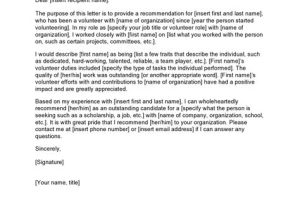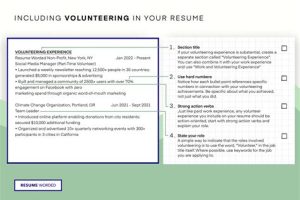Table of Contents
Learn about the guidelines for implementing an Employee Volunteer Program and maximize its impact. Discover how to engage employees, set objectives, allocate resources, measure success, and create a culture of volunteerism within your organization.
Employee Volunteer Program Guidelines are essential for organizations looking to establish a structured and impactful volunteer program. With these guidelines in place, employees can contribute their time and skills towards meaningful community projects, fostering a sense of purpose and fulfillment in their professional lives. Moreover, a well-designed program not only enhances the company’s reputation but also strengthens employee engagement and loyalty. In this article, we will outline the key components of an effective Employee Volunteer Program, providing step-by-step instructions and practical tips to ensure its success.
Introduction
Employee volunteer programs have become increasingly popular in organizations as a way to give back to the community and engage employees in meaningful activities outside of their regular work. However, implementing and managing such programs can be challenging without clear guidelines and policies in place. This article aims to provide useful guidelines for organizations looking to establish an effective employee volunteer program.
Defining the Purpose
Before starting an employee volunteer program, it is crucial to define its purpose. What are the goals and objectives? Is it to support a specific cause or address a particular social issue? Defining the purpose will help align the program with the organization’s values and ensure that it contributes positively to both the community and the employees’ overall satisfaction.
Identifying Volunteer Opportunities
Once the purpose is defined, the next step is to identify suitable volunteer opportunities. Research local nonprofits, charities, or community organizations that align with the program’s purpose. Consider the skills and expertise of the employees when selecting volunteer activities to maximize their impact and engagement.
Creating a Volunteer Policy
Developing a comprehensive volunteer policy is essential to guide employees and protect both the organization and the volunteers. The policy should outline expectations, eligibility criteria, time commitment, and any necessary training or certifications. It should also address potential risks and liability concerns while ensuring a safe volunteering environment.
Providing Training and Support
Offering training and support to employees participating in the volunteer program is crucial for their success. Provide resources, such as workshops or online materials, to educate volunteers about the organization’s mission, values, and the specific volunteer activity they will be involved in. Regular communication and support from program coordinators are also important to address any questions or concerns.
Encouraging Employee Participation
To foster employee engagement, it is essential to encourage participation in the volunteer program. Highlight the benefits of volunteering, such as personal growth, networking opportunities, and skill development. Recognize and appreciate employees’ efforts through internal communications, rewards, or incentives, thus creating a positive and encouraging atmosphere.
Ensuring Flexibility
Recognize that employees have different schedules and commitments, so it is crucial to offer flexibility in the volunteer program. Provide various volunteering options, including one-time events, ongoing commitments, or virtual opportunities, to accommodate different preferences and availability. This flexibility will increase the likelihood of employee participation and satisfaction.
Evaluating Impact
Regularly evaluating the impact of the employee volunteer program is essential to measure its effectiveness and make necessary improvements. Establish clear metrics to track the program’s outcomes, such as the number of hours volunteered, the funds raised, or the community impact achieved. Collect feedback from both employees and the organizations benefiting from the program to assess its success.
Building Partnerships
Collaborating with external partners can enhance the employee volunteer program’s impact and reach. Seek partnerships with local businesses, nonprofit organizations, or government agencies that share similar goals and values. By working together, you can leverage each other’s resources, networks, and expertise for a more significant community impact.
Recognizing Long-Term Commitment
A successful employee volunteer program is built on long-term commitment. It is not a one-time initiative but an ongoing effort to create a positive social impact. Continuously promote the program, encourage new employees to participate, and recognize long-term volunteers for their dedication. Maintaining a sense of purpose and enthusiasm will ensure the program’s sustainability and success.
Conclusion
Implementing an employee volunteer program can bring numerous benefits for both organizations and employees. By following these guidelines, organizations can establish a well-structured and impactful program that engages employees, contributes to the community, and aligns with the organization’s values. Remember, a successful program requires clear guidelines, support, flexibility, and a long-term commitment to making a positive difference.
Employee Volunteer Program Guidelines
1. Purpose and Objectives
The purpose of the employee volunteer program is to support and encourage employees to give back to the community through volunteer activities. The objectives of the program include fostering employee engagement, promoting teamwork, and making a positive impact on the community.
2. Eligibility and Participation
All employees are eligible to participate in the volunteer program. However, participation is voluntary, and employees are encouraged to choose opportunities that align with their interests and skills. The company aims to provide a range of volunteering options to accommodate diverse employee schedules and preferences.
3. Time Off and Scheduling
Employees will be granted a reasonable amount of time off to participate in volunteer activities, subject to the business needs and prior approval by their manager. It is recommended that employees schedule their volunteer activities in advance, allowing sufficient time for coordination and ensuring minimal disruption to their work responsibilities.
4. Support and Recognition
The company will provide support to employees participating in the volunteer program, such as assisting in finding volunteer opportunities, facilitating communication with nonprofit organizations, and providing resources for training and development. Recognizing the contributions of employees, the company may acknowledge their efforts through various means, including internal communications, awards, or events.
5. Safety and Liability
Employees are expected to prioritize their safety and adhere to any safety guidelines provided by the nonprofit organizations they engage with during volunteer activities. The company will ensure that appropriate liability insurance covers employees when participating in approved volunteer activities, while employees are responsible for acting in accordance with the organization’s policies and guidelines.
6. Confidentiality and Privacy
Employees should respect the confidentiality and privacy of the individuals and organizations they come into contact with during volunteer activities. They must not disclose confidential or sensitive information obtained during those activities without proper authorization. It is the responsibility of the company to inform employees about any specific confidentiality requirements related to volunteer activities.
7. Expense Reimbursement
The company may consider reimbursing reasonable expenses incurred by employees during approved volunteer activities. Employees should follow the company’s expense reimbursement guidelines and submit appropriate documentation for reimbursement in a timely manner.
8. Evaluation and Feedback
The volunteer program will be periodically evaluated to determine its effectiveness in meeting its objectives. Employees will be encouraged to provide feedback on their experience, suggest improvements, and share success stories to continually enhance the volunteer program’s impact and relevance.In conclusion, the employee volunteer program guidelines aim to support and encourage employees to engage in volunteer activities that contribute to the community. By providing eligibility and participation criteria, time off and scheduling guidelines, as well as support, recognition, and safety measures, the company ensures that employees can actively participate while balancing their work responsibilities. Confidentiality and privacy expectations, along with expense reimbursement policies, further promote ethical behavior and fairness. Through evaluation and feedback, the program can continuously improve and create a lasting positive impact on both the employees and the community they serve.
In today’s corporate world, employee volunteer programs have become an integral part of many organizations. These programs not only benefit the communities they serve but also contribute to the overall growth and development of employees. To ensure the success and effectiveness of such programs, it is essential to establish clear guidelines that outline the expectations and responsibilities of both the employees and the organization.
Here are some key points to consider when developing employee volunteer program guidelines:
- Eligibility criteria: Clearly define who can participate in the program. Specify whether it is open to all employees or limited to specific departments or job roles. This will ensure fairness and prevent any confusion among employees.
- Volunteer opportunities: Provide a comprehensive list of available volunteer opportunities. Include details about the nature of the work, time commitments, and any required skills or qualifications. This will help employees make informed decisions and choose opportunities that align with their interests and abilities.
- Time off and scheduling: Establish guidelines around scheduling and time off for volunteering. Specify the process for requesting time off, the maximum number of hours/days allowed, and any restrictions during busy periods. This will ensure that employees can balance their work responsibilities with their volunteer commitments.
- Training and support: Outline the training and support provided to employees who participate in the volunteer program. This may include orientation sessions, specialized training for specific volunteer roles, and access to resources or mentors. Clear guidelines will enable employees to feel prepared and confident in their volunteer roles.
- Recognition and rewards: Define how the organization acknowledges and appreciates employees’ volunteer efforts. This could include recognition events, certificates, or even incentives tied to performance evaluations. Recognizing employees’ contributions will not only motivate them but also foster a culture of volunteerism within the organization.
- Reporting and tracking: Establish a system for employees to report their volunteer hours and activities. This will help the organization track the impact of the program, identify areas for improvement, and showcase the collective effort of its employees. It is important to make this process simple and easily accessible for employees.
- Communication channels: Clearly communicate the channels through which employees can access information about the volunteer program. This may include email updates, intranet portals, or dedicated communication platforms. Regular and transparent communication will ensure that employees stay informed and engaged in the program.
- Evaluation and feedback: Implement a mechanism to collect feedback from employees about their volunteer experiences. This could be in the form of surveys, focus groups, or one-on-one discussions. Evaluating the program’s impact and gathering employee input will help refine and enhance the program over time.
By implementing these employee volunteer program guidelines, organizations can create a structured and supportive environment for employees to engage in meaningful volunteer work. Such programs not only contribute to the betterment of society but also enhance employee satisfaction, engagement, and overall well-being.
Dear valued blog visitors,Thank you for taking the time to read our recent article on Employee Volunteer Program Guidelines. We hope that you found the information provided to be insightful and helpful in developing or refining your own organization’s volunteer program. As we conclude this article, we would like to summarize some key points and provide you with some final thoughts.In summary, implementing an Employee Volunteer Program can bring numerous benefits to both the employees and the organization as a whole. By encouraging employees to engage in volunteer activities, not only does it contribute to the betterment of society, but it also enhances employee morale, teamwork, and personal development. However, in order for such programs to be successful, it is crucial to establish clear guidelines and expectations.
First and foremost, it is important to clearly define the objectives and scope of the program. This includes determining the types of volunteer activities that are eligible, the time commitment expected from employees, and any specific skills or qualifications required. By setting these guidelines, employees will have a better understanding of what is expected from them, and the organization can ensure that the program aligns with its overall mission and values.
Secondly, communication is key when it comes to an Employee Volunteer Program. Regularly informing employees about upcoming volunteer opportunities, providing them with the necessary resources and support, and recognizing their efforts are all essential elements for a successful program. This can be achieved through various channels such as emails, newsletters, team meetings, or even dedicated platforms or intranets specifically designed for this purpose. By keeping employees engaged and informed, they are more likely to participate actively and feel valued for their contributions.
Lastly, evaluation and feedback are crucial for continuous improvement. It is important to regularly assess the impact of the program, both on the employees and the community being served. This can be done through surveys, focus groups, or even individual conversations. By gathering feedback from employees, the organization can identify areas of improvement, address any concerns or challenges, and make necessary adjustments to ensure the program remains meaningful and impactful.
In conclusion, implementing an Employee Volunteer Program can be a valuable initiative for any organization. By establishing clear guidelines, fostering effective communication, and continuously evaluating the program, both employees and the organization can benefit greatly. We hope that the information provided in this article has given you some valuable insights and inspiration to develop or enhance your own employee volunteer program. Thank you for your time, and we wish you every success in your efforts to make a positive difference in the world.Best regards,[Your Name]
Video Employee Volunteer Program Guidelines
People Also Ask about Employee Volunteer Program Guidelines:
- What are the guidelines for employee volunteer programs?
- Ensure that employees understand the goals and objectives of the volunteer program.
- Define eligibility criteria for participation in the program.
- Establish guidelines for the number of hours employees can volunteer during work hours.
- Encourage employees to choose volunteer activities aligned with the company’s mission or values.
- Provide training and resources to support employees in their volunteer roles.
- Outline any confidentiality or conflict of interest requirements.
- Establish reporting mechanisms for tracking employee volunteer hours and activities.
- Allocate a budget to support employee volunteer initiatives, if necessary.
- Regularly review and evaluate the program’s effectiveness to make improvements.
- Why are guidelines important in employee volunteer programs?
- How can employee volunteer program guidelines benefit the organization?
- They demonstrate the company’s commitment to social responsibility and community engagement.
- They enhance the company’s reputation and brand image.
- They improve employee morale and engagement by providing meaningful opportunities for personal and professional growth.
- They foster teamwork and collaboration among employees.
- They can attract and retain top talent who value corporate social responsibility.
- They contribute to positive social impact and make a difference in the communities where the company operates.
- Are there any legal considerations when implementing employee volunteer program guidelines?
- Compliance with labor laws, including regulations regarding working hours, breaks, and compensation for volunteer time.
- Ensuring proper insurance coverage for employees participating in volunteer activities.
- Addressing any potential liability issues related to employee participation in off-site or high-risk volunteer projects.
- Protecting employee privacy and confidential information during volunteer activities.
- Avoiding discrimination or favoritism in volunteer opportunities or selection criteria.
Guidelines are important in employee volunteer programs to ensure clarity, consistency, and fairness. They help employees understand the expectations and boundaries of their volunteer activities, ensuring they align with the company’s values and objectives. Guidelines also provide a framework for tracking and evaluating the impact of the program, allowing organizations to make data-driven decisions and improvements.
Employee volunteer program guidelines benefit the organization in several ways:
Yes, there are legal considerations when implementing employee volunteer program guidelines. Some key areas to consider include:






